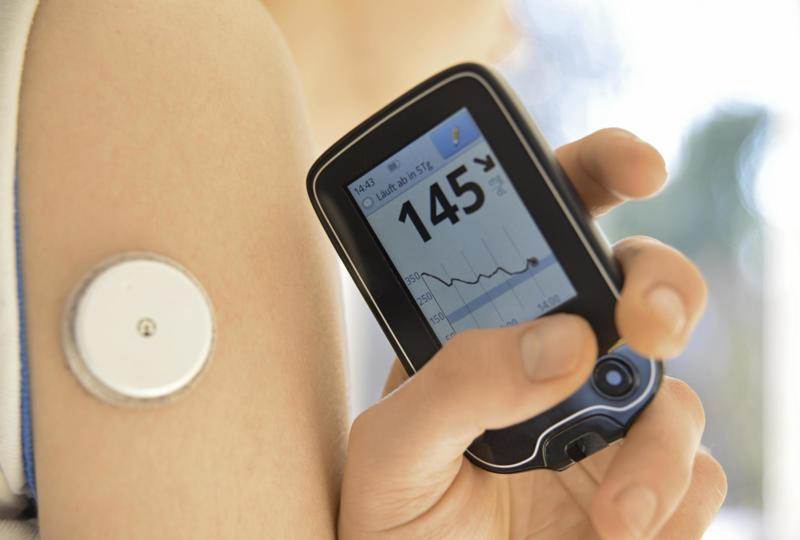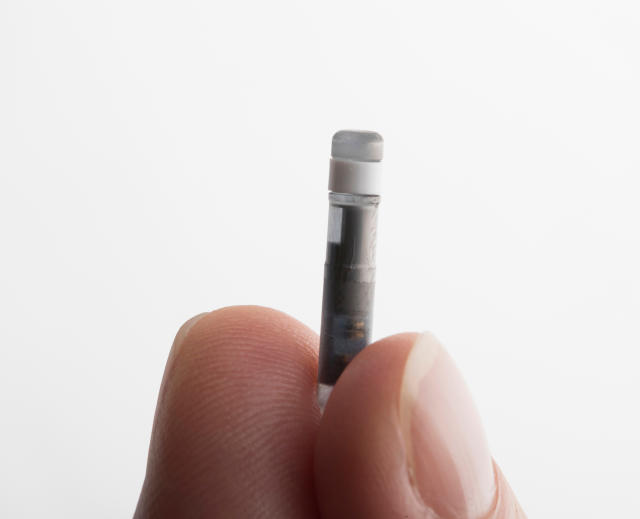Implantable Sensors for Diabetes: A Revolutionary Cure or an Invasive Gamble?
- admin
- September 21, 2024
- 11:36 am
- No Comments

The management of diabetes has significantly evolved over the years, with technological advancements bringing new tools for monitoring and treatment.
Among these innovations, implantable sensors for glucose monitoring are being hailed as a game-changer.
But are they the ultimate solution to the challenges of diabetes management, or do they introduce new risks and complications?
This article explores the pros and cons of implantable sensors for diabetes, providing a comprehensive analysis based on recent scientific research.
Contents of “Implantable Sensors for Diabetes” Article:
- Understanding Implantable Sensors for Diabetes
- How Do Implantable Glucose Sensors Work?
- The Potential Benefits of Implantable Sensors
- Risks and Concerns of Implantable Sensors
- Comparing Implantable Sensors with Traditional Methods
- Conclusion: Revolutionary Cure or Invasive Gamble?
Understanding Implantable Sensors for Diabetes
Implantable sensors for diabetes are devices inserted under the skin to monitor blood glucose levels continuously.
Unlike traditional methods that require finger pricking multiple times a day, these sensors provide real-time data, helping patients and healthcare providers make more informed decisions about insulin dosage and dietary choices.
These devices include a variety of technologies, such as the “implanted glucose monitor” and “implantable interstitial glucose sensor.”
How Do Implantable Glucose Sensors Work?
Implantable glucose sensors work by measuring glucose levels in the interstitial fluid, which surrounds the body’s cells.
The sensors are typically placed under the skin in areas like the upper arm or abdomen. These devices use electrochemical reactions to detect glucose levels, and the data is then transmitted wirelessly to a receiver or smartphone app.
For instance, the “implantable cgm sensor” (Continuous Glucose Monitoring sensor) can track glucose levels continuously for up to 90 days without the need for manual calibration.
The data provided by these sensors are invaluable for managing both Type 1 and Type 2 diabetes, as they allow for better glycemic control and reduce the risk of hypoglycemia.
The Potential Benefits of Implantable Sensors
Implantable glucose sensors are revolutionizing diabetes care by offering a more seamless, pain-free, and accurate way to monitor blood sugar levels.
These tiny devices, embedded under the skin, eliminate the need for multiple daily finger-prick tests while providing a continuous stream of data to help patients and clinicians make better-informed decisions.
Let us explore the key benefits of implantable glucose monitoring:
Real-Time Continuous Monitoring:
Implantable sensors continuously track glucose levels 24/7. Unlike traditional glucometers that offer only snapshot readings, these sensors provide a dynamic glucose profile—capturing trends, peaks, and lows in real time. This allows for proactive adjustments to insulin, diet, or activity levels, helping prevent dangerous fluctuations.
No More Finger Pricks:
For many patients, the repetitive pain and inconvenience of finger-prick testing are major deterrents to proper glucose monitoring.
An implanted blood glucose sensor bypasses this entirely. Users get precise glucose readings without needing to draw blood multiple times a day, enhancing both compliance and quality of life.
Improved Glycemic Control:
According to recent studies in Diabetes Technology & Therapeutics, patients using implantable glucose sensors showed significantly improved HbA1c levels and fewer episodes of hypoglycemia. Continuous access to glucose data enables tighter control, especially for those with Type 1 diabetes or erratic blood sugar patterns.
Longer Lifespan:
Unlike external sensors that need replacement every 7–14 days, most implantable glucose monitors function effectively for 90 to 180 days. This reduces both the financial and logistical burden of frequent changes, making diabetes care more sustainable.
Early Alerts and Safety:
Many implantable devices integrate with smartphones or insulin pumps to send alerts during critical highs or lows, allowing patients to take immediate action and avoid hospitalization.
In essence, implantable sensors are ushering in a new era of smart, responsive diabetes management—reducing risk, increasing convenience, and putting patients in better control of their health.

Risks and Concerns of Implantable Sensors
- Infection Risk: Any device implanted under the skin carries a risk of infection. Although rare, infections can occur around the site of the implant, potentially leading to complications.
- Device Malfunction: Issues such as sensor drift or failure to communicate with the receiver can occur, compromising the accuracy of glucose readings. A malfunctioning “blood glucose implant sensor” can lead to incorrect data, which may result in inappropriate insulin dosing.
- Body’s Reaction to Foreign Objects: The body can sometimes react adversely to implanted devices, leading to inflammation or encapsulation, where the body forms a fibrous capsule around the sensor.
- Removal and Replacement: Unlike external sensors, implantable devices require a minor surgical procedure for insertion and removal. This can be inconvenient and increases the risk of surgical complications.
A study in the Journal of Diabetes Science and Technology discussed the challenges faced in using implantable sensors, including device biocompatibility and the body’s immune response to foreign objects.
These factors can influence the long-term usability and effectiveness of the device.
Comparing Implantable Sensors with Traditional Methods
When compared to traditional blood glucose monitoring methods, implantable sensors offer distinct advantages but also come with unique challenges.
Traditional methods, like finger-pricking and external CGMs, are less invasive and do not require surgical procedures for implantation.
However, they often provide less consistent data and can be more cumbersome for patients to use regularly.
Implantable sensors, on the other hand, provide continuous data with minimal effort from the patient.
This allows for better glycemic control and a more comprehensive understanding of how different factors, such as diet and exercise (such as light jogging), affect blood sugar levels.
The “diabetic implanted glucose monitor” has been shown to be more effective in certain cases for managing complex diabetes cases where frequent monitoring is necessary.
However, the cost of these devices and the potential risks associated with their use make them less accessible to the general population.
According to a study published in the Diabetes Care Journal, while implantable sensors are promising, they are currently recommended for patients who have difficulty managing their diabetes with traditional methods or those who experience frequent episodes of hypoglycemia.
Final Opinion: Revolutionary Cure or Invasive Gamble?
So, are implantable sensors for diabetes a revolutionary cure or an invasive gamble?
The answer is nuanced.
For many patients, these devices represent a significant advancement in diabetes management, offering better glycemic control and reducing the burden of frequent blood glucose testing.
However, the potential risks, including infection, device malfunction, and the need for surgical procedures, cannot be overlooked.
While implantable sensors offer hope for a more manageable and less intrusive way to monitor blood sugar levels, they are not without their drawbacks.
You should therefore include blood sugar support supplement to minimize insulin spikes.
Patients considering this option should weigh the benefits and risks carefully and consult with their healthcare provider to determine if an “implantable glucose sensor” is the right choice for their diabetes management.
References: